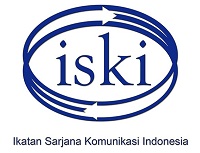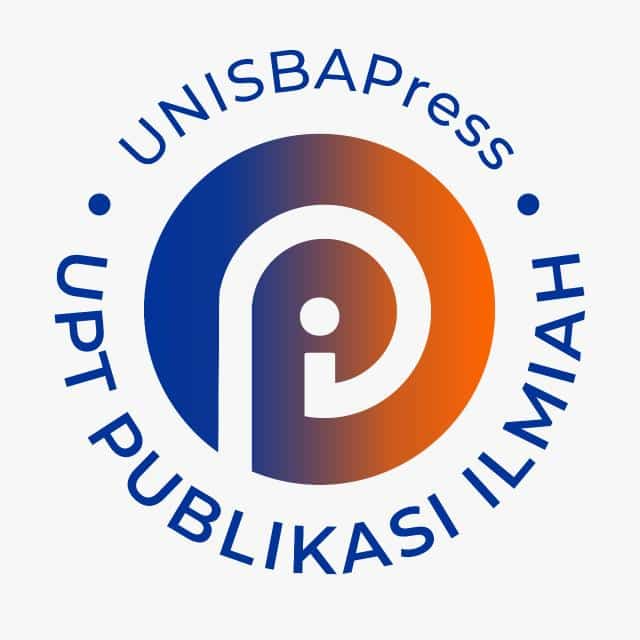The Attractiveness of TikTok Live Shopping to User Emotional Satisfaction
DOI:
https://doi.org/10.29313/mediator.v16i1.2176Keywords:
content creator, emotional gratification, tiktok live shopingAbstract
The aftermath of the Covid-19 Pandemic had an impact on the physical and mental health. Even for workers, it causes anxiety due to job loss. The background of this research is the phenomenon of a pandemic that causes excessive public pressure. The emergence of Tik Tok Live Shopping in 2022 provides an alternative to building people’s mental health during the Covid-19 pandemic. TikTok Live Shopping is one of the social media that offers real-time entertainment functions. This study aims to determine the effect of the attractiveness of TikTok Live Shopping on User Emotional Satisfaction. The theory used is emotional gratification as a derivative of the gut and gratification theory. Attractiveness is measured on three dimensions: source credibility, content creator, and message content. This study used an explanatory method, purposive sampling technique, and multiple regression analysis as data analysis. The results of the study show that there is an influence between the attractiveness of TikTok Live Shopping on User Emotional Satisfaction. User satisfaction is indicated by emotional involvement. Through TikTok Live Shopping, users can feel the sensation and have a direct experience. This, the research hypothesis is accepted, the use of TikTok Live Shopping contributes to providing emotional satisfaction to its users.
References
Adinugroho, I. (2016). Memahami Mood Dalam Konteks Indonesia: Adaptasi Dan Uji Validitas Four Dimensions Mood Scale. Jurnal Pengukuran Psikologi Dan Pendidikan Indonesia, 5(2), 127–152.
Anindyajati, G., Wiguna, T., Murtani, B. J., Christian, H., Wigantara, N. A., Putra, A. A., Hanafi, E., Minayati, K., Ismail, R. I., Kaligis, F., Savitri, A. I., Uiterwaal, C. S. P. M., & Diatri, H. (2021). Anxiety and Its Associated Factors During the Initial Phase of the COVID-19 Pandemic in Indonesia. Frontiers in Psychiatry, 12(March), 1–10. https://doi.org/10.3389/fpsyt.2021.634585
Aninsi, N. (2021). Cara Belanja dan Jualan di TikTok Shop Banyak Tawarkan Promo Menarik. Katadata. Co.Id.
Bartsch, A., & Viehoff, R. (2010). The use of media entertainment and emotional gratification. Procedia - Social and Behavioral Sciences, 5, 2247–2255. https://doi.org/10.1016/j.sbspro.2010.07.444
Basilisco, R., & Cha, K. J. (2015). Uses and gratification motivation for using facebook and the impact of facebook usage on social capital and life satisfaction among filipino users. International Journal of Software Engineering and Its Applications, 9(4), 181–194. https://doi.org/10.14257/ijseia.2015.9.4.19
BBC News. (2021). TikTok Geser Google, Netizen Indonesia Bukan 10 Besar Pengguna. VIVA.Co.Id.
Bengtsson, S., & Johansson, S. (2022). The Meanings of Social Media Use in Everyday Life: Filling Empty Slots, Everyday Transformations, and Mood Management. Social Media + Society, 8(4), 1–11. https://doi.org/10.1177/20563051221130292
BPS. (2021). 270,20 juta Penduduk Indonesia Hasil SP2020. Badan Pusat Statistik. https://www.bps.go.id/news/2021/01/21/405/bps--270-20-juta-penduduk-indonesia-hasil-sp2020.html
Braghieri, L., Levy, R., & Makarin, A. (2022). Social Media and Mental Health. In The Handbook of Mental Health and Space (Issue 9723, pp. 200–213). Munich Society for the Promotion of Economic Research - CESifo. https://doi.org/10.4324/9781315620312-13
Brewer, M. B., & Hewstone, M. (2004). Emotion and Motivation. Wiley-Blackwell.
Bryman, A. (2012). Social Research Methods (4th Editio). Oxford University Press.
Bughin, J., Manyika, J., & Woetzel, J. (2017). Jobs lost, jobs gained: Workforce transitions in a time of automation. In McKinsey Global Institute (Issue December). https://doi.org/10.1002/lary.20616
Depoux, A., Martin, S., Karafillakis, E., Preet, R., Wilder-Smith, A., & Larson, H. (2020). The pandemic of social media panic travels faster than the COVID-19 outbreak. Journal of Travel Medicine, 27(3), 1–2. https://doi.org/10.1093/jtm/taaa031
Dilon, C. (2020). TikTok influences on teenagers and young adults students: The common usages of the application TikTok. American Scientific Research Journal for Engineering, Technology, and Sciences, 68(1), 132–142.
Fernandes, B., Biswas, U. N., Tan-Mansukhani, R., Vallejo, A., & Essau, C. A. (2020). The impact of COVID-19 lockdown on internet use and escapism in adolescents. Revista de Psicologia Clinica Con Ninos y Adolescentes, 7(3), 59–65. https://doi.org/10.21134/rpcna.2020.mon.2056
Goleman, D. (2015). Emotional Intelligence Kecerdasan Emosional. Gramedia Pustaka Utama.
Hausmann, J. S., Sufka, P., Bhana, S., Liew, J. W., Machado, P. M., Wallace, Z. S., Costello, W., Robinson, P. C., Yazdany, J., Grainger, R., & Sirotich, E. (2020). Conducting research in a pandemic: The power of social media. European Journal of Rheumatology, 7(2), S85–S88. https://doi.org/10.5152/eurjrheum.2020.2066
Joo, T.-M., & Teng, C.-E. (2017). Impacts of Social Media (Facebook) on Human Communication and Relationships: A View on Behavioral Change and Social Unity. International Journal of Knowledge Content Development & Technology, 7(4), 27–50. http://dx.doi.org/10.5865/IJKCT.2017.7.4.027
King, L. (2016). The Science of Psychology: An Appreciative View (3th Editio). Salemba Humanika.
Krisdianto, M. A., & Mulyanti, M. (2015). Mekanisme Koping dengan Tingkat Depresi pada Mahasiswa Tingkat Akhir. Jurnal Ners Dan Kebidanan Indonesia, 3(2), 71–76. https://doi.org/10.21927/jnki.2015.3(2).71-76
Kumparan.com. (2020). Ini Asal Muasal TikTok yang Kini Mendunia. Kumparan.Com.
Mc Quail, D. (2010). Mass Communication Theory. In SAGE Publications (6th Editio). Sage Publications.
Nadeak, B., Juwita, C. P., Sormin, E., & Naibaho, L. (2020). Hubungan kemampuan berpikir kritis mahasiswa dengan penggunaan media sosial terhadap capaian pembelajaran pada masa pandemi Covid-19. Jurnal Konseling Dan Pendidikan, 8(2), 98–104. https://doi.org/10.29210/146600
Nasrullah, R. (2015). Media Sosial : perspektif komunikasi, budaya, dan sositeknologi. Simbiosa Rekatama Media.
Neuman, W. L. (2014). Social Research Methods: Qualitative and Quantitative Approaches. In PEARSON Education (Seventh Ed, Vol. 30). PEARSON. https://doi.org/10.2307/3211488
Ng, L. H. X., Tan, J. Y. H., Tan, D. J. H., & Lee, R. K. W. (2021). Will you dance to the challenge?: Predicting user participation of TikTok challenges. Proceedings of the 2021 IEEE/ACM International Conference on Advances in Social Networks Analysis and Mining, ASONAM 2021, 11(8), 356–360. https://doi.org/10.1145/3487351.3488276
Prasetya, A., Nurdin, M. F., & Gunawan, W. (2021). Perubahan Sosial Masyarakat dalam Perspektif Sosiologi Talcott Parsons di Era New Normal. Sosietas, 11(1), 929–939. https://doi.org/10.17509/sosietas.v11i1.36088
Ratulangi, A. G., Kairupan, B. H. R., & Dundu, A. E. (2021). Adiksi Internet Sebagai Salah Satu Dampak Negatif Pembelajaran Jarak Jauh Selama Masa Pandemi COVID-19. Jurnal Biomedik:JBM, 13(3), 251–258. https://doi.org/10.35790/jbm.13.3.2021.31957
Reinecke, L. (2016). Mood Management Theory. In The International Encyclopedia of Media Effects (pp. 1–13). Wiley-Blackwell. https://doi.org/10.1002/9781118783764.wbieme0085
Santoso, A., Ardi, W. R., Prasetya, R. L., Dwidiyanti, M., Wijayanti, D. Y., Mu’in, M., Ulliya, S., Handayani, F., Sulisno, M., Ni’mah, M., & Aisah, N. A. (2020). Tingkat Depresi Mahasiswa Keperawatan di Tengah Wabah COVID-19. Holistic Nursing and Health Science, 3(1), 1–8. https://doi.org/10.14710/hnhs.3.1.2020.1-8
Sarasati, B., & Nurvia, O. (2021). Emosi Dalam Tulisan. Jurnal Psibermetika, 14(1), 40–48. https://doi.org/10.30813/psibernetika.
Simanjuntak, D., & Fitriana, R. (2020). Culture Shock, Adaptation, and Self-Concept of Tourism Human Resources in Welcoming the New Normal Era. Society, 8(2), 427–443. https://doi.org/10.33019/society.v8i2.200
Sulistyana, C. S., & Lestari, A. P. (2022). Durasi Penggunaan Media Sosial dengan Perubahan Mood Mahasiswa Saat Perkuliahan Online. ADI HUSADA Nursing Journal, 8(1), 43–52. https://doi.org/10.37036/ahnj.v8i1.226
Sulistyorini, W., & Sabarisman, M. (2017). Depresi : Suatu Tinjauan Psikologis. Sosio Informa, 3(2), 153–164. https://doi.org/10.33007/inf.v3i2.939
Sundar, S. S. (2015). The Handbook of the Psychology of Communication Technology. Wiley-Blackwell.
Sutisna, I. P. G. (2020). Gerakan Literasi Digital Pada Masa Pandemi Covid-19. STILISTIKA, 8(2), 268–283. https://doi.org/10.5281/zenodo.3884420
Triwidyati, E., & Pangastuti, R. L. (2021). Storytelling through the Tik Tok Application Affects Followers’ Behaviour Changes. Jurnal Ekonomi & Bisnis JAGADITHA, 8(2), 127–135. https://doi.org/10.22225/jj.8.2.2021.127-135
Wan, J., Lu, Y., Wang, B., & Zhao, L. (2017). How attachment influences users’ willingness to donate to content creators in social media: A socio-technical systems perspective. Information and Management, 54(7), 837–850. https://doi.org/10.1016/j.im.2016.12.007
West, R., & Turner, L. H. (2010). Introducing Communication Theory ANALYSIS AND APPLICATION. In M. Ryan (Ed.), Journal of Chemical Information and Modeling (FOURTH EDI, Vol. 53, Issue 9). McGraw-Hill. https://doi.org/10.1017/CBO9781107415324.004
Winarti, C. (2021). Pemanfaatan Sosial Media oleh UMKM Dalam Memasarkan Produk di Masa Pandemi Covid-19. Prosiding Seminar Nasional Bisnis Seri Ke-4, 195–206. https://pascasarjanafe.untan.ac.id/wp-content/uploads/2021/01/19.pdf
Downloads
Published
Issue
Section
License
Copyright (c) 2023 Author

This work is licensed under a Creative Commons Attribution-ShareAlike 4.0 International License.
























